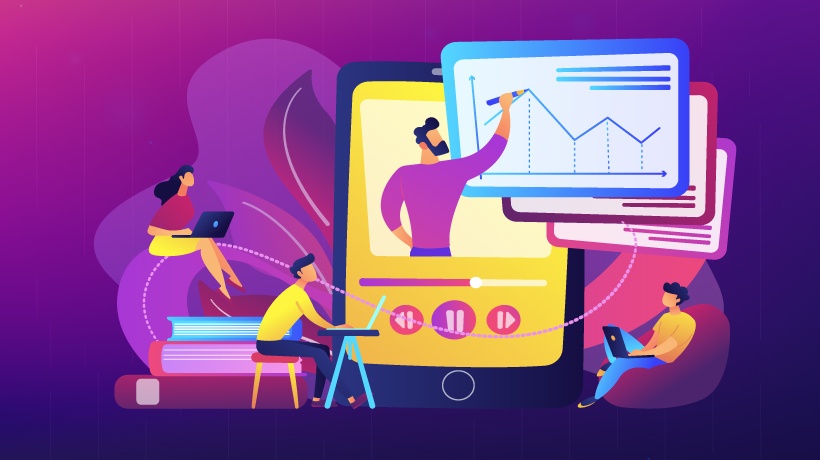Blended Learning: Looking Beyond COVID-19(Coronavirus)
The COVID-19 pandemic has forced school closures all over the world. Educators and parents have been forced to adopt technology to ensure learning continues while kids stay at home. Many schools have been caught unawares and unprepared. Educators and parents alike have frantically rushed to equip themselves with eLearning tools and resources.
Statistics show that eLearning will become mainstream soon. In recent years, there has been an advancement in technology and increased internet connectivity. While the workforce has hugely adopted technology, the education sector needs to do more in producing people who can work in highly digitalized environments.
Recent studies [1] have shown the importance of combining classroom teaching with technology. This concept is technically known as blended learning [2]. Learners who combine face-to-face instruction with online learning perform better than those who only use one mode of learning.
eLearning in schools is no longer a fad, it is essential for survival, as seen during this COVID-19 period. Here are the top 6 reasons why you should pursue a blended approach to education.
1. Individualized Learning
Students are unique in how they learn and retain content. Some grasp concepts very fast while others are slow learners. Supplementing classroom teaching with eLearning allows the students to learn at their own pace.
They can always find time outside classroom instruction to go through difficult concepts or areas that are not well understood. Learners are also able to get individualized support from an online teacher. This is especially important for those who are shy to raise their hands or ask questions in class.
2. Immediate Feedback
Classroom teaching can sometimes restrict immediate feedback. A teacher is expected to teach, give assignments, and mark the work done by the students. This ends up being time-consuming especially with large classroom sizes.
Blended learning allows the student to do quizzes and tests online and get immediate feedback through auto mark features available on online platforms. It also saves a lot of time for teachers that can instead be used to help weak students through one-on-one interactions.
3. Varied Modes Of Learning
Again, students learn in different ways. Some do well with classroom instruction while others require more stimulation to learn. eLearning platforms provide the student with pictures, videos, podcasts, and games that appeal to all senses.
This is especially essential for learning abstract concepts in math and science. Through such mediums, the learning process becomes fun and engaging to the students. They also create and maintain students' interest in the subjects.
4. Collaboration
While classroom teaching restricts the students and the teacher within its walls. Technology opens a doorway for students to work in groups with their classmates, other schools, and even on a global scale. They can share ideas on projects while gaining a wider perspective on global issues [3]. The students can also engage in writing competitions, which is a huge motivation to learn.
If you are a teacher, you can also collaborate with your peers in other schools to enhance your professional skills.
5. Parental Involvement
The use of technology by younger learners will require supervision by parents. In any way, a parent [4] is a major component in the learning process. Technology allows parents to participate in the learning process by offering guidance and support on the home front.
As a parent, you will be able to communicate with teachers about your child's progress in real time. Any incidences at home or school can be shared between you and the teacher to ensure the child's wellbeing and progress. If you are a parent, take this current COVID-19 school closures as an opportunity to interact with your child. Make sure you know what they are doing online and guide them toward valuable content.
6. Attainment Of Future Work Skills
Online learning requires one to inculcate certain life skills for it to be successful. Students are required to practice self-discipline, time management, and online etiquette. They should also be digitally savvy to operate in the online environment. Sending emails and presentation skills are nurtured through exposure to technology use. All these skills [5] are essential in the 21st century and will prepare the students for future work in whichever career they choose to pursue.
Bottom Line
Combining classroom teaching with eLearning is crucial in realizing the impact of technology. Are you a student? You will learn at your own pace while getting immediate feedback. Access to different mediums of learning will also make learning more fun and engaging. What's more, you will gain a global perspective on issues like climate change and conservation.
As a parent, you will be more involved in your child's learning process. You will understand their strengths and weaknesses and have an opportunity to guide them in the right direction. If you are a teacher, you will save a lot of time that can be used to work on the students' weak areas as you enhance your professional skills through collaboration.
Let's look beyond COVID-19 and embrace blended learning in schools and at home as we prepare our students to succeed now and in the future.
References:
[1] Why Do We Need Technology Integration?
[2] The Definition Of Blended Learning
[4] Parent Engagement with Student Online Learning Is Important
[5] What Are the 4 C's of 21st Century Skills?









